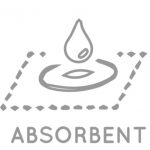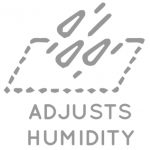


The wool has a great affinity for water but the two parts of the cortex (ortho and para) have different affinities which makes them spiral around each other, creating the crimp of the fiber. The crimp encloses a large amount of air which increases the thermal protection by limiting the conduction. Scales also act by limiting air exchange by curbing their movement.

The macromolecular structure of wool has great resistance to the twist therefore to the deformation. It has good elasticity, in case lengthening to an external force, it returns to its original state when the effect of force ceases (up to 30% elongation). If the force increases, the deformation can become permanent then it is the breaking point. These Steps are different depending on the temperature and humidity condition.

The amino acids of keratin easily fix water molecules (adsorption mechanism). In addition, wool is very hydrophobic with regard to water vapor, but has a hydrophobic reaction to liquid water. By a physicochemical phenomenon, the absorption of moisture by the fiber is accompanied by heat production and conversely the loss moisture is accompanied by heat absorption. Wool is bad conductor of heat.

Being a natural fiber, it has a versatile ability to absorb & release moisture and to breathe. It can absorb up to 35% of its own weight without feeling damp. It controls the humidity levels within a room and keep the air temperature more constant.



